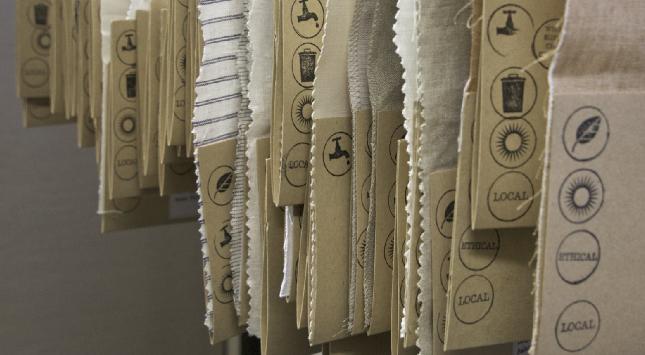 |
 |
 |
||

The designers relationship with these raw materials is often instinctive, and creative choices are usually based upon tactile and visual appeal, trend consideration, functionality and market awareness.
More than ever it is crucial that the designer or product developer of the future needs to make more fully informed choices, based not only on trend-led aesthetic and tactile properties of a fabric. Of crucial importance is the relevance of the origin of the raw material and how it’s production impacts upon the environment, wildlife, agriculture, industry and the communities that generate these fabrics. During much of the Twentieth century the focus of fabric development and manufacturing centred on a traditional group of natural fibres, some man-made artificial ones regenerated from cellulose and a large number of synthetic polymers based predominantly on oil. Diversity of materials is hard to find in the contemporary fashion and textile industries. The clothing retail market is dominated by a large number of similar products in a limited range of fibre types, in fact cotton and polyester together account for over 80 percent of the global market in textiles.
During much of the Twentieth century the focus of fabric development and manufacturing centred on a traditional group of natural fibres, some man-made artificial ones regenerated from cellulose and a large number of synthetic polymers based predominantly on oil. Diversity of materials is hard to find in the contemporary fashion and textile industries. The clothing retail market is dominated by a large number of similar products in a limited range of fibre types, in fact cotton and polyester together account for over 80 percent of the global market in textiles.
The issue with the petroleum based man-made fibres is their reliance on a diminishing non-renewable natural resource, and the price of polyester is inextricably linked to the price of oil. Issues the dominance of conventionally farmed cotton are excessive water consumption and the catastrophic use of fertilisers and pesticides.
Today a new breed of ‘synthetic’ fibres are being developed, and the traditional ones revisited, these originate from natural and renewable sources and are offering new aspects to the designer and product developer.
The original impetus to develop new fibres has often been as a substitute for more expensive or unobtainable natural fibres. Now the motivation for the new generation of textile developments is to offer sustainable alternatives to the traditional natural and synthetic fibres and to provide broader options, from creative, functional and wellbeing perspectives.
Rapidly renewable and sustainable fibre sources that can thrive without chemical intervention, and processes that limit waste and emissions are the way forward if we are to use our resources wisely.

INTRODUCTION
